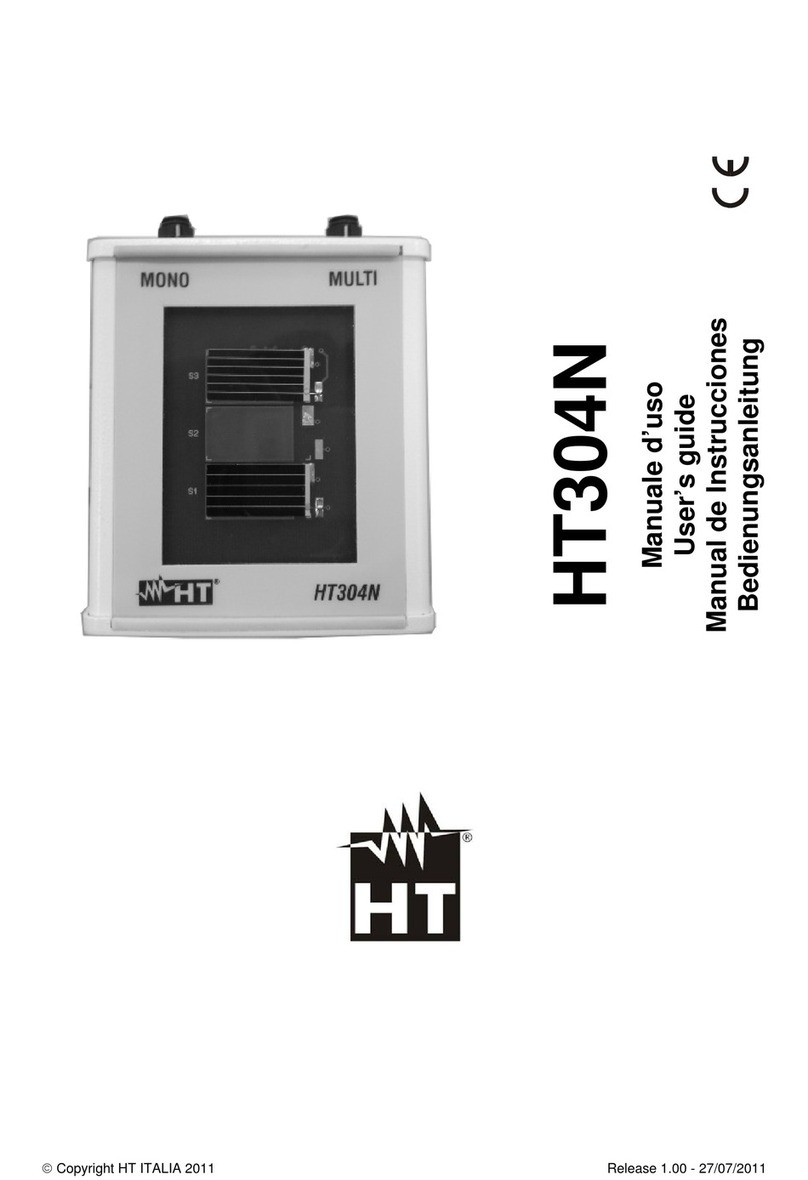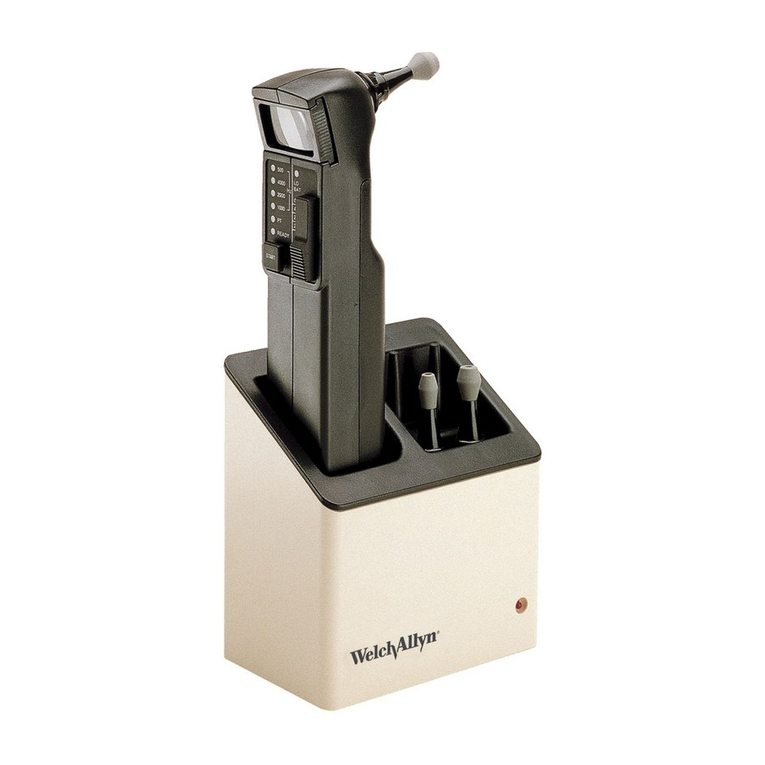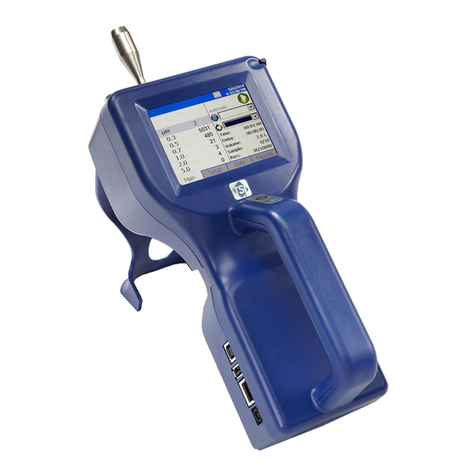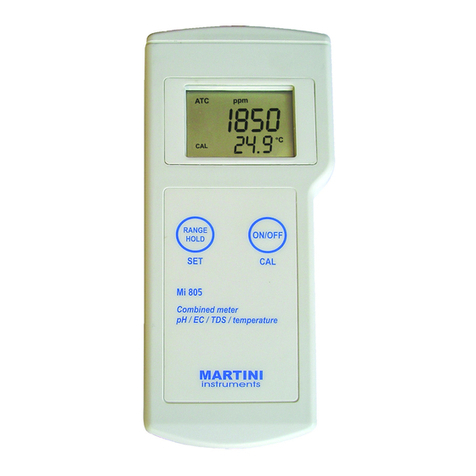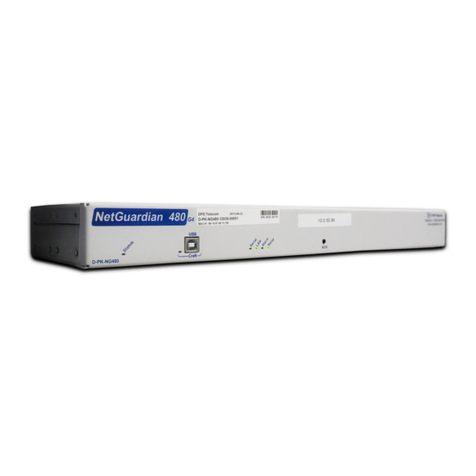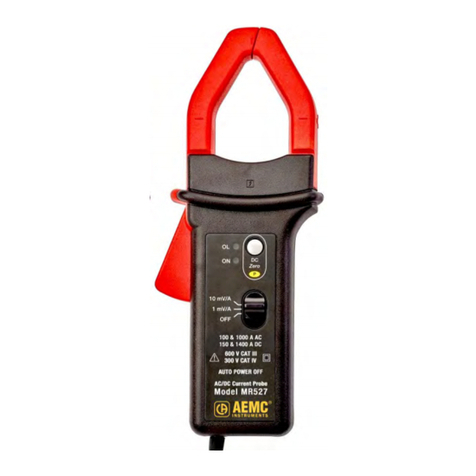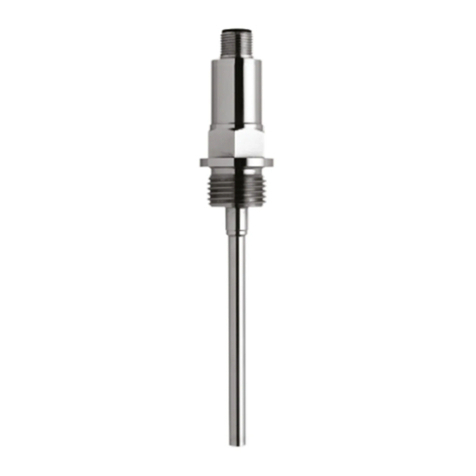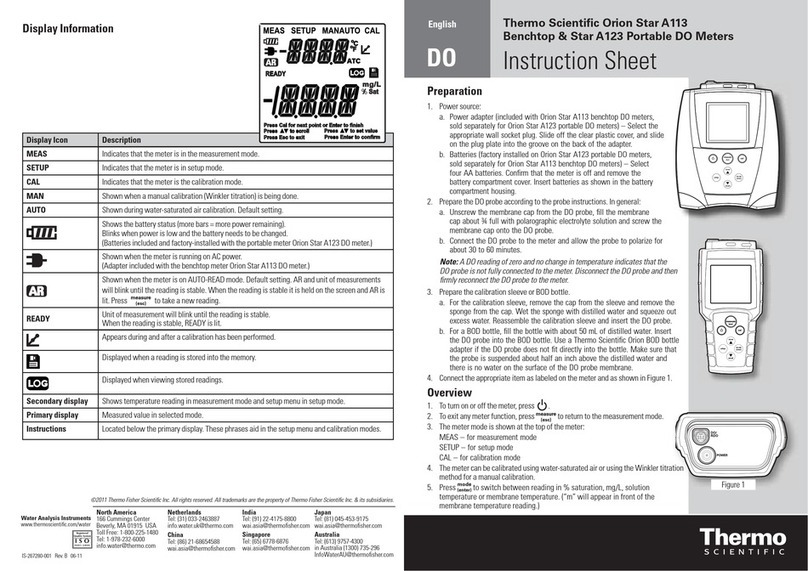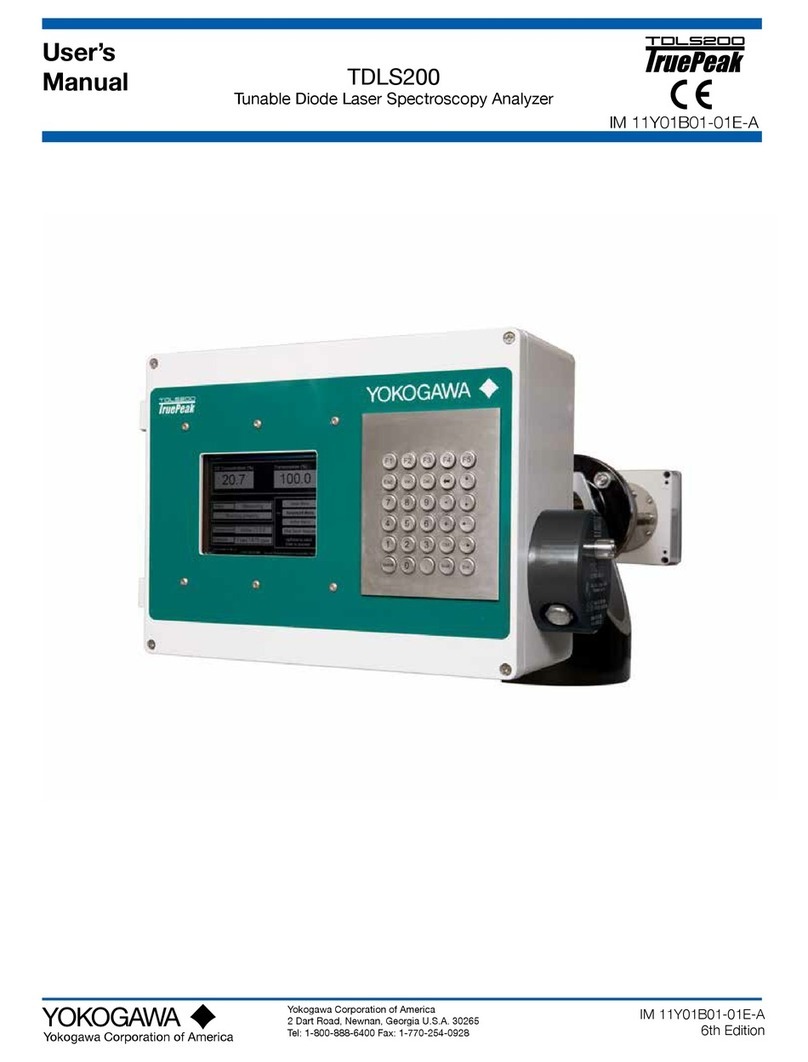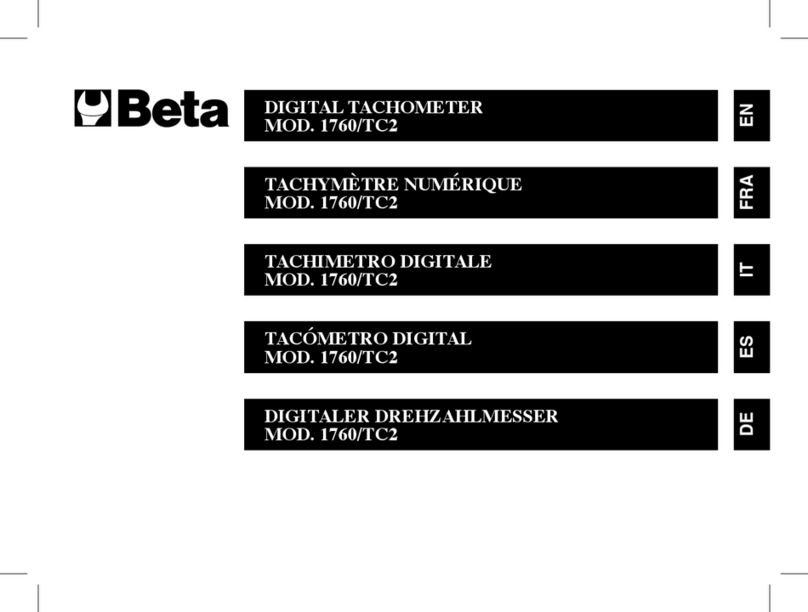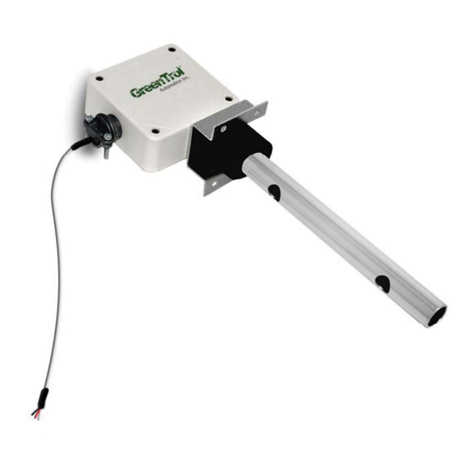HT Instruments HT63 User manual

Copyright HT ITALIA 2016 Release 1.02 - 25/01/2016
HT63
Manuale d'uso
User manual
Manual de instrucciones
Bedienungsanleitung
Manuel d’utilisation


Indice generale
General index
Índice general
Inhalt
Table des matiéres
ITALIANO ......................... IT - 1
ENGLISH .........................EN - 1
ESPAÑOL........................ES - 1
DEUTSCH.......................DE – 1
FRANÇAIS.......................FR - 1


Copyright HT ITALIA 2016 Version EN 1.02 - 25/01/2016
ENGLISH
User manual

HT63
EN - 1
Table of contents:
1.PRECAUTIONS AND SAFETY MEASURES...............................................................2
1.1.Preliminary instructions..................................................................................................... 2
1.2.During use......................................................................................................................... 3
1.3.After use............................................................................................................................ 3
1.4.Definition of Measurement (Overvoltage) category........................................................... 3
2.GENERAL DESCRIPTION...........................................................................................4
2.1.Measuring average values andTRMS values.................................................................... 4
2.2.Definition of true root mean square value and Crest factor............................................... 4
3.PREPARATION FOR USE...........................................................................................5
3.1.Initial checks...................................................................................................................... 5
3.2.Instrument power supply................................................................................................... 5
3.3.Calibration......................................................................................................................... 5
3.4.Storage.............................................................................................................................. 5
4.OPERATING INSTRUCTIONS.....................................................................................6
4.1.Description of the instrument............................................................................................. 6
4.1.1.Description of the controls.......................................................................................................... 6
4.2.Description of function keys .............................................................................................. 7
4.2.1.A HOLD key................................................................................................................................ 7
4.2.2.RANGE key ................................................................................................................................ 7
4.2.3.MAX MIN/PEAK key................................................................................................................... 7
4.2.4.Hz%/REL key........................................................................................................................... 7
4.2.5.MODE key .................................................................................................................................. 8
4.2.6.HIRES key.................................................................................................................................. 8
4.2.7.Disabling the Auto Power Off function........................................................................................ 8
4.3.Description of rotary switch functions................................................................................ 9
4.3.1.DC Voltage measurement.......................................................................................................... 9
4.3.2.AC Voltage measurement ........................................................................................................ 10
4.3.3.Frequency and Duty Cycle measurement................................................................................ 11
4.3.4.Resistance measurement and Continuity test.......................................................................... 12
4.3.5.Diode test.................................................................................................................................. 13
4.3.6.Capacitance measurement....................................................................................................... 14
4.3.7.Temperature measurement with K-type probe......................................................................... 15
4.3.8.DC Current measurement and e 4-20mA% reading ................................................................ 16
4.3.9.AC Current measurement......................................................................................................... 17
5.MAINTENANCE .........................................................................................................18
5.1.Replacing the batteries and the internal fuses................................................................ 18
5.2.Cleaning the instrument .................................................................................................. 18
5.3.End of life ........................................................................................................................ 18
6.TECHNICAL SPECIFICATIONS ................................................................................19
6.1.Technical characteristics................................................................................................. 19
6.1.1.Reference standards................................................................................................................ 21
6.1.2.General characteristics............................................................................................................. 21
6.2.Environment.................................................................................................................... 21
6.2.1.Environmental conditions for use ............................................................................................. 21
6.3.Accessories..................................................................................................................... 21
6.3.1.Accessories provided ............................................................................................................... 21
6.3.2.Optional accessories................................................................................................................ 21
7.ASSISTANCE.............................................................................................................22
7.1.Warranty conditions......................................................................................................... 22
7.2.Assistance....................................................................................................................... 22

HT63
EN - 2
1. PRECAUTIONS AND SAFETY MEASURES
The instrument has been designed in compliance with directive IEC/EN61010-1 relevant to
electronic measuring instruments. For your safety and in order to prevent damaging the
instrument, please carefully follow the procedures described in this manual and read all
notes preceded by symbol with the utmost attention.
Before and after carrying out measurements, carefully observe the following instructions:
Do not carry out any measurement in humid environments.
Do not carry out any measurements in case gas, explosive materials or flammables are
present, or in dusty environments.
Avoid any contact with the circuit being measured if no measurements are being
carried out.
Avoid any contact with exposed metal parts, with unused measuring probes, circuits,
etc.
Do not carry out any measurement in case you find anomalies in the instrument such
as deformation, breaks, substance leaks, absence of display on the screen, etc.
Pay special attention when measuring voltages higher than 20V, since a risk of
electrical shock exists.
In this manual, and on the instrument, the following symbols are used:
Warning: observe the instructions given in this manual; improper use could
damage the instrument or its components.
Double-insulated meter
AC voltage or current
DC voltage or current
Connection to earth
1.1. PRELIMINARY INSTRUCTIONS
This instrument has been designed for use in environments of pollution degree 2.
It can be used for VOLTAGE and CURRENT measurements on installations with CAT
IV 600V and CAT III 1000V.
We recommend following the normal safety rules devised by the procedures for
carrying out operations on live systems and using the prescribed PPE to protect the
user against dangerous currents and the instrument against incorrect use.
In case the lack of indication of the presence of voltage may represent a danger for the
operator, always carry out a continuity measurement before carrying out the
measurement on the live system, in order to confirm the correct connection and
condition of the leads.
Only the leads supplied with the instrument guarantee compliance with the safety
standards. They must be in good conditions and be replaced with identical models,
when necessary.
Do not test circuits exceeding the specified voltage limits.
Do not perform any test under environmental conditions exceeding the limits indicated
in § 6.2.1.
Check that the battery is correctly inserted.
Make sure that the LCD display and the rotary switch indicate the same function.

HT63
EN - 3
1.2. DURING USE
Please carefully read the following recommendations and instructions:
CAUTION
Failure to comply with the caution notes and/or instructions may damage
the instrument and/or its components or be a source of danger for the
operator.
Before activating the rotary switch, disconnect the test leads from the circuit being
measured.
When the instrument is connected to the circuit being measured, do not touch any
unused terminal.
Do not measure resistance in case external voltages are present; even if the
instrument is protected, an excessive voltage may cause malfunction.
While measuring, if the value or the sign of the quantity being measured remain
unchanged, check if the HOLD function is enabled.
1.3. AFTER USE
When measurement is complete, set the rotary switch to OFF to turn off the instrument.
If the instrument is not to be used for a long time, remove the batteries.
1.4. DEFINITION OF MEASUREMENT (OVERVOLTAGE) CATEGORY
Standard “IEC/EN61010-1: Safety requirements for electrical equipment for measurement,
control and laboratory use, Part 1: General requirements”, defines what measurement
category, commonly called overvoltage category, is. § 6.7.4: Measured circuits, reads:
(OMISSIS)
Circuits are divided into the following measurement categories:
Measurement category IV is for measurements performed at the source of the low-
voltage installation.
Examples are electricity meters and measurements on primary overcurrent protection
devices and ripple control units.
Measurement category III is for measurements performed on installations inside
buildings.
Examples are measurements on distribution boards, circuit breakers, wiring, including
cables, bus-bars, junction boxes, switches, socket-outlets in the fixed installation, and
equipment for industrial use and some other equipment, for example, stationary motors
with permanent connection to fixed installation.
Measurement category II is for measurements performed on circuits directly
connected to the low-voltage installation.
Examples are measurements on household appliances, portable tools and similar
equipment.
Measurement category I is for measurements performed on circuits not directly
connected to MAINS.
Examples are measurements on circuits not derived from MAINS, and specially
protected (internal) MAINS-derived circuits. In the latter case, transient stresses are
variable; for that reason, the standard requires that the transient withstand capability of
the equipment is made known to the user.

HT63
EN - 4
2. GENERAL DESCRIPTION
The instrument carries out the following measurements:
DC Voltage
AC TRMS Voltage
DC Current
4-20mA% display
AC TRMS Current
Resistance and Continuity test
Diode test
Capacity
Current and voltage frequency
Duty Cycle
Temperature with K-type probe
Each of these functions can be selected by means of the appropriate switch. The
instrument is also equipped with function keys (see § 4.2), an analogue bargraph and
backlight. The instrument is also equipped with an Auto Power OFF function (which can be
disabled), which automatically switches off the instrument 15 minutes after the last time a
function key was pressed or the rotary switch was turned. To switch on the instrument
again, turn the rotary switch.
2.1. MEASURING AVERAGE VALUES ANDTRMS VALUES
Measuring instruments of alternating quantities are divided into two big families:
AVERAGE-VALUE meters: instruments measuring the value of the sole wave at
fundamental frequency (50 or 60 Hz).
TRMS (True Root Mean Square) VALUE meters: instruments measuring the TRMS
value of the quantity being tested.
With a perfectly sinusoidal wave, the two families of instruments provide identical results.
With distorted waves, instead, the readings shall differ. Average-value meters provide the
RMS value of the sole fundamental wave; TRSM meters, instead, provide the RMS value
of the whole wave, including harmonics (within the instruments bandwidth). Therefore, by
measuring the same quantity with instruments from both families, the values obtained are
identical only if the wave is perfectly sinusoidal. In case it is distorted, TRMS meters shall
provide higher values than the values read by average-value meters.
2.2. DEFINITION OF TRUE ROOT MEAN SQUARE VALUE AND CREST FACTOR
The root mean square value of current is defined as follows: “In a time equal to a period,
an alternating current with a root mean square value of 1A intensity, circulating on a
resistor, dissipates the same energy that, during the same time, would be dissipated by a
direct current with an intensity of 1A". This definition results in the numeric expression:
G=
Tt
t
dttg
T
0
0
)(
12The root mean square value is indicated with the acronym RMS.
The Crest Factor is defined as the relationship between the Peak Value of a signal and its
RMS value: CF (G)= RMS
p
G
GThis value changes with the signal waveform, for a purely
sinusoidal wave it is 2=1.41. In case of distortion, the Crest Factor takes higher values
as wave distortion increases.

HT63
EN - 5
3. PREPARATION FOR USE
3.1. INITIAL CHECKS
Before shipping, the instrument has been checked from an electric as well as mechanical
point of view. All possible precautions have been taken so that the instrument is delivered
undamaged.
However, we recommend generally checking the instrument in order to detect possible
damage suffered during transport. In case anomalies are found, immediately contact the
forwarding agent.
We also recommend checking that the packaging contains all components indicated in §
6.3.1. In case of discrepancy, please contact the Dealer.
In case the instrument should be returned, please follow the instructions given in § 7.
3.2. INSTRUMENT POWER SUPPLY
The instrument is supplied with 4x1.5V alkaline batteries type AAA IEC LR03, included in
the package. When batteries are flat, the symbol “” appears on the display. To replace
the batteries, see § 5.1.
3.3. CALIBRATION
The instrument has the technical specifications described in this manual. The instrument's
performance is guaranteed for one year.
3.4. STORAGE
In order to guarantee precise measurement, after a long storage time under extreme
environmental conditions, wait for the instrument to come back to normal condition (see §
6.2.1).

HT63
EN - 6
4. OPERATING INSTRUCTIONS
4.1. DESCRIPTION OF THE INSTRUMENT
4.1.1. Description of the controls
CAPTION:
1. LCD display
2. HIRES key
3. Hz% / REL key
4. RANGE key
5. A HOLD key
6. MODE key
7. MAXMIN/PEAK key
8. Rotary selector switch
9. Input terminal 10A
10.Input terminal
VHz%CAPTemp
11.Input terminal mAA
12.Input terminal COM
Fig. 1: Description of the instrument

HT63
EN - 7
4.2. DESCRIPTION OF FUNCTION KEYS
4.2.1. A HOLD key
Pressing the A HOLD key freezes the value of the measured quantity on the display. After
pressing this key, the message “HOLD” appears on the display. Press the HOLD key again
to exit the function.
Press and hold the A HOLD key for a long time in order to activate/deactivate the
“AutoHOLD” function. The message “A HOLD” appears on the display. With this function
enabled, the instrument freezes the value of the quantity on the display, automatically
updating it when a new stable value is detected; a buzzer sounds when this happens. This
function is useful in case of input signals with quick oscillations.
4.2.2. RANGE key
Press the RANGE key to activate the manual mode and to disable the Autorange function.
The symbol “AUTO” disappears from the upper left part of the display. In manual mode,
press the RANGE key to change measuring range: the relevant decimal point will change
its position. The RANGE key is not active in positions ,, CAP,Hz%, Temp°C°F and
4-20mA%. In Autorange mode, the instrument selects the most appropriate ratio for
carrying out measurement. If a reading is higher than the maximum measurable value, the
indication “O.L” appears on the display. Press and hold the RANGE key for more than 1
second to exit the manual mode and restore the Autorange mode.
4.2.3. MAX MIN/PEAK key
Pressing the MAX MIN/PEAK key once activates the detection of maximum (MAX),
minimum (MIN) and average (AVG) value of the quantity being measured. The values are
constantly updated and are displayed cyclically every time the same key is pressed. The
MAX MIN/PEAK key is not active when the HOLD function is activated. The MAX
MIN/PEAK key is not active in positions ,, CAP, Hz%,Temp°C°F and 4-20mA%.
Press and hold the MAX MIN/PEAK key for more than 1 second or turn the selector to exit
the function.
Press and hold the MAX MIN/PEAK key for more than two seconds to activate the
detection of Maximum and Minimum peak values o AC Voltage and Current with a
response time of 1ms. Both values are constantly updated and are displayed cyclically
every time the same key is pressed again. The display shows the symbol associated with
the selected function: “PMAX” for maximum peak value, “PMIN” for minimum peak value.
The Auto Power OFF function is automatically disabled.
Press and hold the MAX MIN/PEAK key for more than 2 seconds or turn the selector to
exit the function.
4.2.4. Hz%/REL key
Press the Hz%/RELkey to select frequency measurement and duty cycle test in
positions VHz%, 10AHz%, mA (AC), Aand Hz% of the rotary selector. The
frequency range is different in the different positions.
Long pressing the Hz%/RELkey activates relative measurement. The instrument zeroes
the display and saves the displayed value as a reference value which subsequent
measurements will be referred to. The symbol “” appears on the display. This function is
not active in positions ,, Hz%,Temp°C°F and 4-20mA% . Press and hold the
Hz%/RELkey again to exit the function.

HT63
EN - 8
4.2.5. MODE key
Pressing the MODE key allows selecting a double function on the rotary switch. In
particular, it is active in position CAP to select diode test, continuity test,
capacitance measurement and resistance measurement, in position Temp°C°F to select
temperature measurement in °C o °F and mA , Ato select AC or DC measurements.
In position VHz%, pressing the MODE key activates/deactivates the “” function, which
allows reading AC voltage with a low-pass filter, capable of reducing the effects of
disturbance on the signal. In this condition, the instrument switches to Manual mode.
4.2.6. HIRES key
Press the HIRES key activates the instrument’s high-resolution operating mode, and the
message “HiRes” appears on the display. In this condition, the instrument switches to 4½
digits (60000 dots) for a better detail on data reading. This function is not active in
positions Temp°C°F and in the capacitance measurement. Press again the HIRES key for
a long time in order to go back to 3½ digits (6000 dots) standard display.
4.2.7. Disabling the Auto Power Off function
In order to preserve internal batteries, the instrument switches off automatically
approximately 15 minutes after it was last used. To disable the Auto Power Off function,
proceed as follows:
Switch off the instrument (OFF)
Press and hold the MODE key and switch on the instrument by turning the rotary
switch. The message “1OFF”appears on the display.
Switch off and then on again the instrument to enable the function.

HT63
EN - 9
4.3. DESCRIPTION OF ROTARY SWITCH FUNCTIONS
4.3.1. DC Voltage measurement
CAUTION
The maximum input DC voltage is 1000V. Do not measure voltages
exceeding the limits given in this manual. Exceeding voltage limits could
result in electrical shocks to the user and damage to the instrument.
Fig. 2: Use of the instrument for DC Voltage measurement
1. Select positions Vor mV.
2. Insert the red cable into input terminal VHz%CAPTempand the black cable into
input terminal COM.
3. Position the red lead and the black lead respectively in the spots with positive and
negative potential of the circuit to be measured (see Fig. 2). The display shows the
value of voltage.
4. If the display shows the message "O.L", select a higher range.
5. When symbol "-" appears on the instrument’s display, it means that voltage has the
opposite direction with respect to the connection in Fig. 2.
6. To use the HOLD, RANGE, MAX MIN, RELand HIRES functions, see § 4.2

HT63
EN - 10
4.3.2. AC Voltage measurement
CAUTION
The maximum input AC voltage is 1000V. Do not measure voltages
exceeding the limits given in this manual. Exceeding voltage limits could
result in electrical shocks to the user and damage to the instrument.
Fig. 3: Use of the instrument for AC voltage measurement
1. Select positions VHz% or mV
2. In position mV , press the MODE key to display the “AC” symbol on the display
3. Insert the red cable into input terminal VHz%CAPTempand the black cable into
input terminal COM.
4. Position the red lead and the black lead respectively in the spots of the circuit to be
measured (see Fig. 3). The display shows the value of voltage.
5. If the display shows the message "O.L", select a higher range.
6. Press the Hz%/RELkey to select measurements “Hz” o “%” in order to display the
values of frequency and duty cycle of input voltage. The bargraph is not active in these
functions. Press the MODE key to go back to voltage measurement and activate the
function, if necessary.
7. To use the HOLD, RANGE, MAX MIN, PEAK, HIRES and REL functions, see § 4.2

HT63
EN - 11
4.3.3. Frequency and Duty Cycle measurement
CAUTION
The maximum input AC voltage is 1000V. Do not measure voltages
exceeding the limits given in this manual. Exceeding voltage limits could
result in electrical shocks to the user and damage to the instrument.
Fig. 4: Use of the instrument for frequency measurement and duty cycle test.
1. Select position Hz%.
2. Press the Hz% key to select measurements “Hz” or “%” in order to display the values of
frequency and duty cycle of input voltage.
3. Insert the red cable into input terminal VHz%CAPTemp(HT62) and the black
cable into input terminal COM.
4. Position the red lead and the black lead respectively in the spots of the circuit to be
measured (see Fig. 4). The value of frequency (Hz) or of duty cycle (%) is shown on
the display. The bargraph is not active in these functions.
5. If the display shows the message "O.L", select a higher range.
6. To use the HOLD and HIRES function, see § 4.2.

HT63
EN - 12
4.3.4. Resistance measurement and Continuity test
CAUTION
Before attempting any resistance measurement, cut off power supply from
the circuit to be measured and make sure that all capacitors are discharged,
if present.
Fig. 5: Use of the instrument for Resistance measurement and Continuity test
1. Select position CAP
2. Insert the red cable into input terminal VHz%CAPTempand the black cable into
input terminal COM.
3. Position the test leads in the desired spots of the circuit to be measured (see Fig. 5).
The display shows the value of resistance.
4. If the display shows the message "O.L", select a higher range.
5. Press the MODE key to select “” measurement, relevant to the continuity test, and
position the test leads in the desired spots of the circuit to be measured.
6. The value of resistance (which is only indicative) is displayed in and the instrument
sounds if the value of resistance is <35.
7. To use the HOLD, RANGE, MAX MIN, RELand HIRES functions, see § 4.2

HT63
EN - 13
4.3.5. Diode test
CAUTION
Before attempting any resistance measurement, cut off power supply from
the circuit to be measured and make sure that all capacitors are discharged,
if present.
Fig. 6: Use of the instrument for diode test
1. Select position CAP
2. Press the MODE key to select “” measurement.
3. Insert the red cable into input terminal VHz%CAPTempand the black cable into
input terminal COM.
4. Position the leads at the ends of the diode to be tested (see Fig. 6), respecting the
indicated polarity. The value of directly polarized threshold voltage is shown on the
display.
5. If threshold value is equal to 0mV, the P-N junction of the diode is short-circuited.
6. If the display shows the message “O.L”, the terminals of the diode are reversed with
respect to the indication given in Fig. 6 or the P-N junction of the diode is damaged.
7. To use the HOLD and HIRES function, see § 4.2.

HT63
EN - 14
4.3.6. Capacitance measurement
CAUTION
Before carrying out capacitance measurements on circuits or capacitors, cut
off power supply from the circuit being tested and let all capacitance in it be
discharged. When connecting the multimeter and the capacitance to be
measured, respect the correct polarity (when required).
Fig. 7: Use of the instrument for Capacitance measurement
1. Select position CAP
2. Press the MODE key until the symbol “nF” is displayed.
3. Insert the red cable into input terminal VHz%CAPTemp and the black cable
into input terminal COM.
4. Press the REL/key before carrying out measurements.
5. Position the leads at the ends of the capacitor to be tested, respecting, if necessary,
the positive (red cable) and negative (black cable) polarity (see Fig. 7). The display
shows the value of capacitance. The bargraph is not active in this function.
6. The message “O.L.” indicates that the value of capacitance exceeds the maximum
measurable value.
7. To use the HOLD and RELfunctions, see § 4.2.

HT63
EN - 15
4.3.7. Temperature measurement with K-type probe
CAUTION
Before attempting any temperature measurement, cut off power supply from
the circuit to be measured and make sure that all capacitors are discharged,
if present.
Fig. 8: Use of the instrument for Temperature measurement
1. Select position Temp°C°F
2. Press the MODE key until the symbol “°C” or “°F” is displayed.
3. Insert the provided adapter into input terminals VHz%CAPTemp(polarity +) and
COM (polarity -) (see Fig. 8)
4. Connect the provided K-type wire probe or the optional K-type thermocouple (see § ) to
the instrument by means of the adapter, respecting the positive and negative polarity
on it. The display shows the value of temperature. The bargraph is not active in this
function.
5. The message “O.L.” indicates that the value of temperature exceeds the maximum
measurable value.
6. To use the HOLD function, see § 4.2.
Table of contents
Other HT Instruments Measuring Instrument manuals
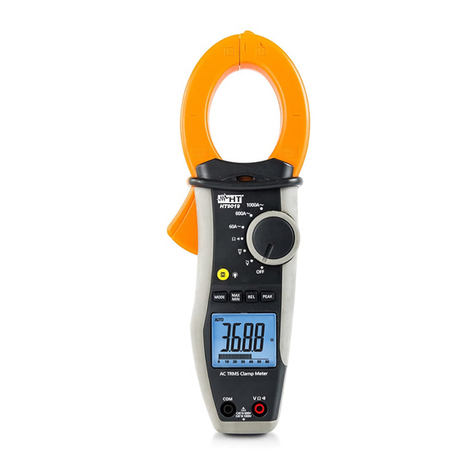
HT Instruments
HT Instruments HT9019 User manual
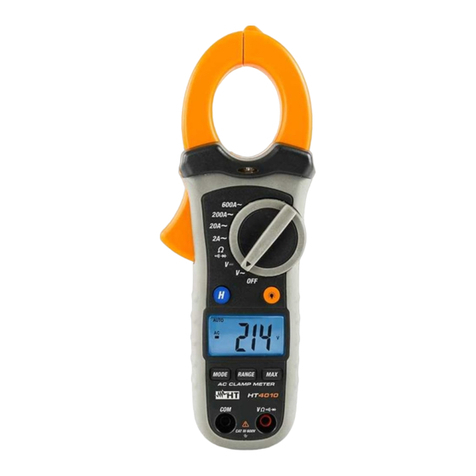
HT Instruments
HT Instruments HT4010 User manual

HT Instruments
HT Instruments HT25N User manual

HT Instruments
HT Instruments 1008765 User manual
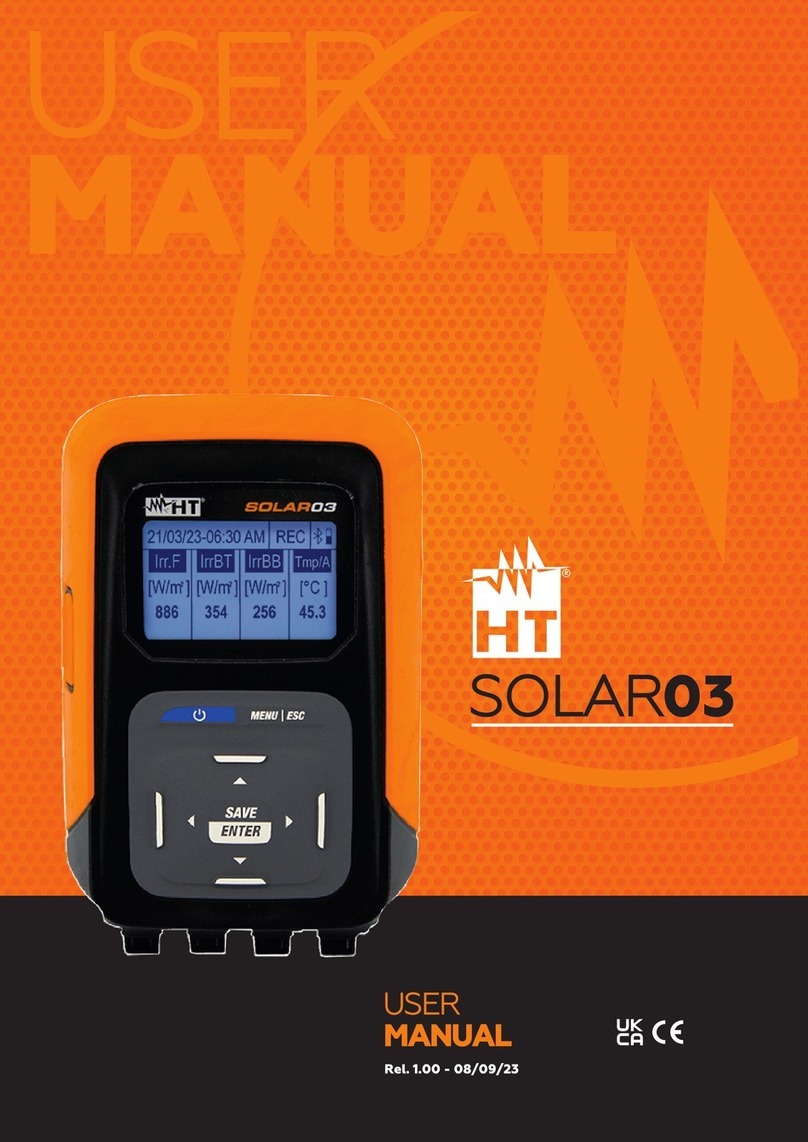
HT Instruments
HT Instruments SOLAR03 User manual

HT Instruments
HT Instruments HT305 User manual
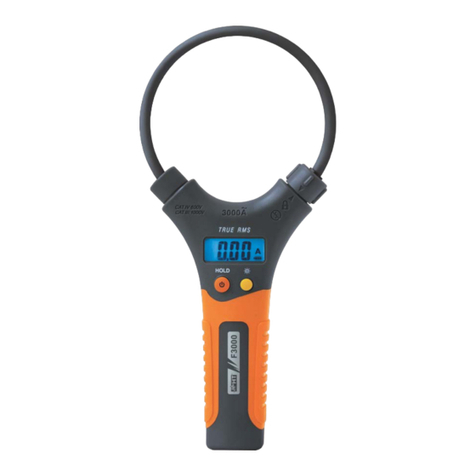
HT Instruments
HT Instruments F3000U User manual

HT Instruments
HT Instruments HT4011 User manual
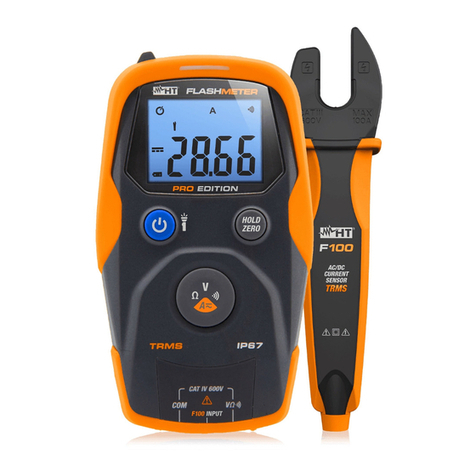
HT Instruments
HT Instruments FLASHMETER PRO User manual
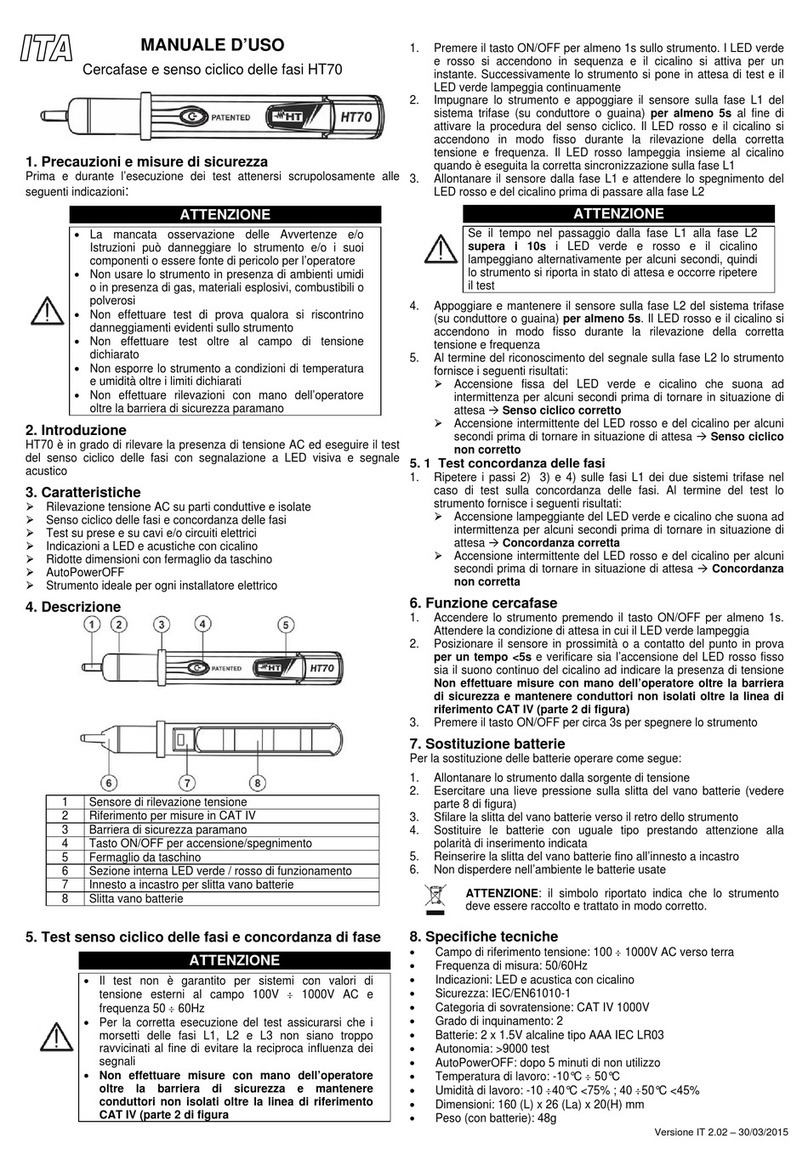
HT Instruments
HT Instruments HT70 User manual

